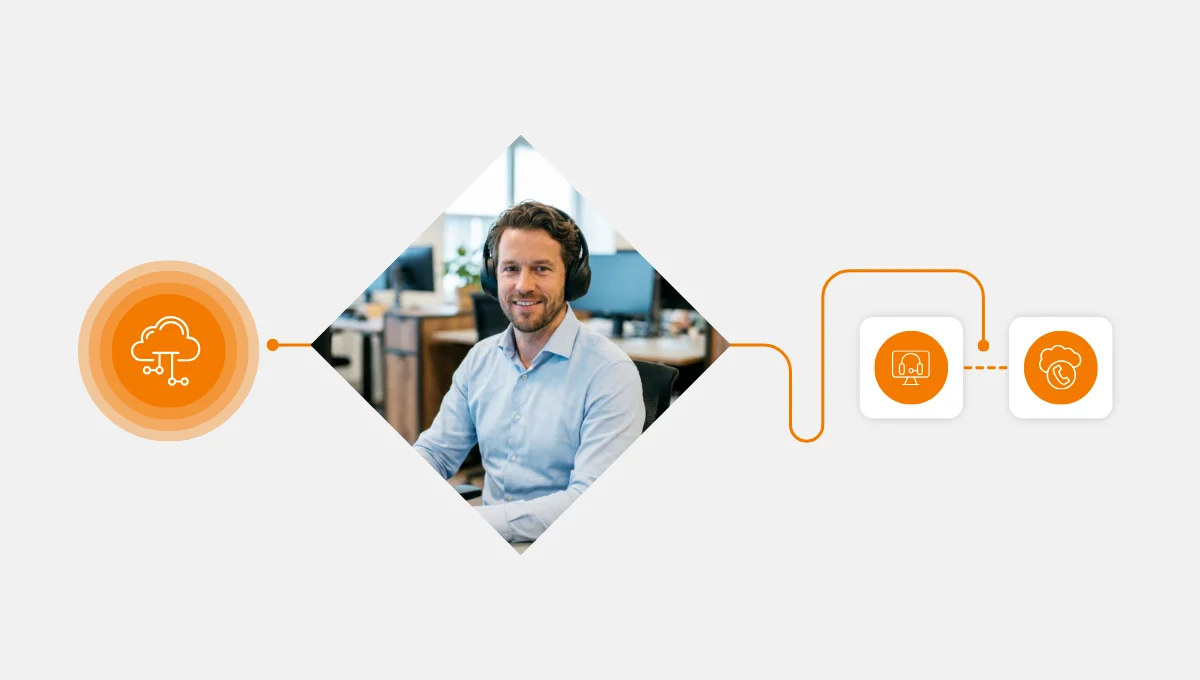If you think all call centers are created equal, it’s time for a reality check.
The global contact center market is projected to hit $496 billion by 2027, which means there is a growing demand for both inbound and outbound strategies.
However, many businesses still struggle to understand the distinct roles each type plays—or worse, treat them interchangeably.
Whether you’re scaling support or launching a sales push, knowing the difference between inbound and outbound call centers can make or break your strategy.
So let’s learn.
What Is an Inbound Call Center?
Inbound call center software is designed to receive and manage incoming calls from customers. Their goal? Deliver fast, frictionless service that boosts satisfaction and retention.
The basic smart features of inbound call centers are:
- Call center routing: Reduces wait times by directing customers to the right agent based on their needs or history. This minimizes frustration and increases first-call resolution.
- Integrations with CRM tools: Enables agents to access complete customer data in real-time, allowing for faster, more personalized responses.
- Live chat: Offers customers an alternative channel for instant communication, improving convenience and reducing call volume.
- Advanced reporting: Equips managers with performance insights to identify bottlenecks, train agents effectively, and continuously optimize operations.
If your team is often reacting to issues, an inbound-focused setup with proactive support tools can shift the dynamic entirely.
✔️Inbound call centers are your first line of defense for customer loyalty.

What Is an Outbound Call Center?
Outbound call center solutions are all about proactive outreach.
These centers place calls to potential or existing customers for sales, renewals, surveys, or event invites. Unlike reactive inbound teams, outbound teams initiate conversations with a clear goal to drive action. The basic features are:
- Predictive dialers: Automatically call multiple contacts and only connect agents when a live person answers.
- Real-time scripting: Agents are supported with dynamic conversation guides that adapt based on customer responses. A business might use this to help agents navigate objections and smoothly close renewals.
- Automated follow-ups: Missed calls or requested callbacks are automatically queued and scheduled. A SaaS company, for instance, could use this feature to reconnect with trial users nearing the end of their free period, boosting conversion rates.
- Analytics: By analyzing call data and campaign metrics, managers can adjust strategies in real-time to improve conversion rates.
Outbound models also open doors for market research, customer re-engagement, and cross-sell/upsell strategies.
✔️Simply put, outbound centers are built to chase opportunity and revenue.
How a Blended Call Center Brings the Best of Both
A blended call center handles both inbound and outbound functions—ideal for companies juggling support and sales.
Besides all needed tools for seamless customer service, Call Center Studio inbound and outbound provide features and tools like:
- Intelligent call distribution ensures incoming calls are automatically routed to the most appropriate agent, improving response times and customer satisfaction.
- Automated campaign dialing helps outbound teams efficiently reach large volumes of contacts, boosting productivity without manual effort.
- AI-driven insights provide real-time data and performance analytics, enabling better decision-making and continuous improvement.
Together, these tools create a responsive, data-informed environment that adapts to both customer needs and business goals.
Benefits of Using a Blended Call Center Model
One center, double the impact. That’s our motto. The real magic of a blended model is in how it removes operational barriers by:
- Maximizing agent utilization: During high-volume periods, such as a product launch or service outage, agents can be dynamically reassigned from outbound calls to handle spikes in support demand, ensuring no one is idle.
- Scaling support and outreach flexibly: If a campaign response rate suddenly increases, the team can shift focus to follow-up with qualified leads or ramp up inbound staffing when support queries surge.
- Delivering a unified customer experience: A customer who receives a marketing call and later calls in for support is handled seamlessly, as the agent has access to full interaction history and context.
Instead of agents trained in just one task, you get a nimble team that can respond and initiate based on what your business—and your customers—need most.
Choosing the Right Model for Your Business
The decision between inbound, outbound, or blended call centers depends on your business goals. Pick the model that aligns with your KPIs—not just your legacy setup. Choosing well now saves a lot of rework later.
- Do your agents primarily receive or initiate calls?
- Are your goals more CX- or sales-driven?
- Do you need real-time campaign insights or SLA tracking?
After answering these questions:
✔️ If you prioritize support excellence and retention, go for an inbound call center.
✔️ Want to focus on revenue generation and brand reach? Then the answer is the outbound center.
And don’t forget a strong inbound team might just need a little training to support outbound goals—and vice versa. The right call center technology makes it easier to train, shift, and scale without missing a beat.
✔️The good news is that with Call Center Studio, you can benefit from both models without switching systems.

Recap: Know Your Call Center Type
With the right setup, businesses avoid operational bottlenecks and data gaps. Smart automation and analytics highlight what works, so teams can focus on continuous improvement.
- Inbound call centers focus on handling incoming inquiries and support issues.
- Outbound call centers specialize in proactive outreach, such as sales and surveys.
- Blended call centers combine both approaches, increasing flexibility and team efficiency.
Whether you’re managing a customer service call center or a sales call center, the right call center technology streamlines performance.
Call Center Studio inbound and Call Center Studio outbound tools empower teams to deliver consistent, high-quality service and sales interactions.




